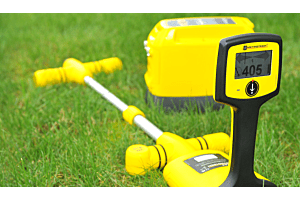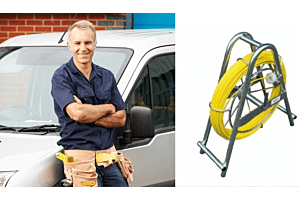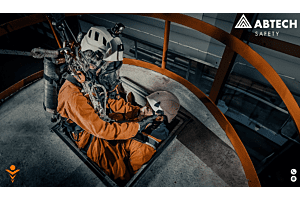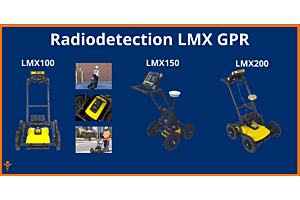
Drain camera inspections are an invaluable tool for diagnosing and resolving issues within drainage systems. However, the effectiveness of these inspections can be compromised by various common mistakes. This comprehensive guide aims to shed light on these pitfalls and offer best practices for conducting accurate and efficient drain camera inspections.
Pre-Assessment of Drain Condition
One frequent oversight is neglecting to evaluate the drain's condition before deploying the camera. A preliminary assessment is vital for identifying blockages, cracks, or other issues that could affect the inspection's accuracy or even damage the camera. Skipping this step can lead to wasted resources and unexpected complications during the inspection. Therefore, a meticulous pre-assessment is essential for both time-efficiency and the prevention of equipment damage.
Importance of Drain Cleaning
Cleaning the drain prior to the camera inspection is non-negotiable. Failure to do so can result in unclear or distorted images, making it challenging to pinpoint underlying issues. Debris like grease, dirt, and mineral deposits can obstruct the camera's view and even damage the equipment. A clean drain ensures that the camera can provide a clear and accurate visual assessment, thereby preventing misdiagnoses and unnecessary expenses.
Operator Training and Experience
Operating a drain camera requires specialized training and experience. Inexperienced operators are prone to misinterpreting footage, leading to incorrect diagnoses and ineffective solutions. They may also lack the skills to navigate unexpected challenges, such as blockages that require specialized removal techniques. Therefore, it's crucial to employ trained professionals for drain camera inspections to ensure accurate and effective outcomes.
Choosing the Right Camera
Using an inappropriate camera for the specific application can yield inaccurate results and even damage the drainage system. Different cameras are designed for various purposes, and it's essential to consider factors like pipe size, material, and condition when selecting a camera. Consulting with professionals who understand the nuances of different camera types can prevent errors and ensure efficient and accurate inspections.
Camera Positioning
Proper camera positioning is crucial for a comprehensive and accurate inspection. Failing to position the camera correctly can result in missed or misinterpreted details. Operators should be adept at adjusting the camera's angles and distances to capture clear visuals, thereby maximizing their ability to identify issues accurately.
Documentation and Record-Keeping
Thorough documentation of the inspection findings serves multiple purposes, including future reference, effective communication among stakeholders, and legal support in case of disputes. Neglecting this aspect can hinder effective problem-solving and compromise the integrity of future inspections.
Regular Maintenance of Equipment
The importance of regular maintenance and inspection of drain cameras cannot be overstated. Routine care ensures the equipment's longevity and reliability. Failure to maintain the camera can lead to frequent issues, compromised inspection accuracy, and even costly equipment replacement.
Equipment Protection
Taking precautions to protect the drain camera from potential damage during use is vital. This includes preparing the environment by removing potential hazards and handling the equipment carefully. Employing protective measures like appropriate casing can significantly reduce the risk of damage.
Safety Precautions
Safety should never be compromised when operating a drain camera. This includes wearing the necessary protective gear and adhering to the manufacturer's guidelines. Ignoring safety precautions can result in personal injury and compromise the inspection's effectiveness.
When to Seek Professional Help
For complex or severe drain issues, it's crucial to recognize when professional assistance is required. Attempting to resolve these problems without the necessary expertise can exacerbate the issue and lead to further damage. Professionals offer the technical skills and experience needed for efficient and effective solutions.
Conclusion
Drain camera inspections are a critical component of effective drainage maintenance. However, their success hinges on various factors, including proper pre-assessment, operator expertise, and meticulous documentation. By adhering to these best practices and avoiding common mistakes, professionals can offer high-quality services, thereby maintaining their reputation and ensuring client satisfaction.
FAQS
- What are some common mistakes people make when using a drain camera?
Some common mistakes include failing to properly assess the drain condition before using a camera, neglecting to clean the drain before inserting the camera, and using a drain camera without proper training or experience.
- How important is it to use the correct type of drain camera for a specific application?
Using the wrong type of drain camera can lead to inaccurate results and potential damage to the camera or drain. It is crucial to use the appropriate camera for the specific drain issue at hand.
- Why is it necessary to properly position the drain camera during inspection?
Proper positioning ensures an accurate view of the drain, allowing for better assessment of any issues or blockages. Incorrect positioning may lead to overlooking important details or misdiagnosing the problem.
- Should the findings from a drain camera inspection be documented and recorded?
Yes, documenting and recording the findings is essential for future reference and comparison. It helps in tracking the progress of any repairs or maintenance and aids in making informed decisions regarding the drain system.
- Why is regular maintenance and inspection of drain cameras important?
Regular maintenance and inspection ensure that drain cameras are in optimal working condition, reducing the risk of malfunction or inaccurate results. It also helps identify any potential issues early on, preventing costly repairs or replacements.
- How can one protect the drain camera from potential damage during use?
It is crucial to adequately protect the drain camera by following safety precautions, such as using protective gear, ensuring proper handling, and avoiding rough or careless use. Additionally, storing the camera in a safe and secure place when not in use is recommended.
- What safety precautions should be followed when using a drain camera?
When using a drain camera, it is important to wear protective gear, such as gloves and goggles, to prevent any potential harm. Following proper procedures and guidelines, as outlined by the manufacturer or a professional, is also crucial for personal safety.
- Why is it essential to seek professional assistance for complex or severe drain issues?
Complex or severe drain issues require the expertise of professionals who have the knowledge, experience, and specialized equipment to effectively diagnose and resolve the problem. Attempting to handle such issues without professional assistance may lead to further damage or ineffective solutions.
- Can a drain camera inspection be performed without proper training or experience?
It is not recommended to use a drain camera without proper training or experience. Operating a drain camera requires knowledge of the equipment, understanding of drain systems, and familiarity with potential risks and safety measures.
- How can neglecting to clean the drain before using a camera impact the inspection results?
Neglecting to clean the drain before inserting the camera can obstruct the view and accuracy of the inspection. Debris or buildup in the drain may hide potential issues or cause misinterpretation of the camera footage.






Login and Registration Form